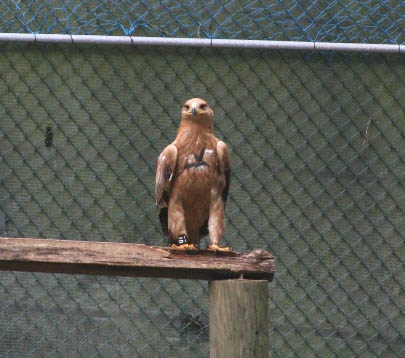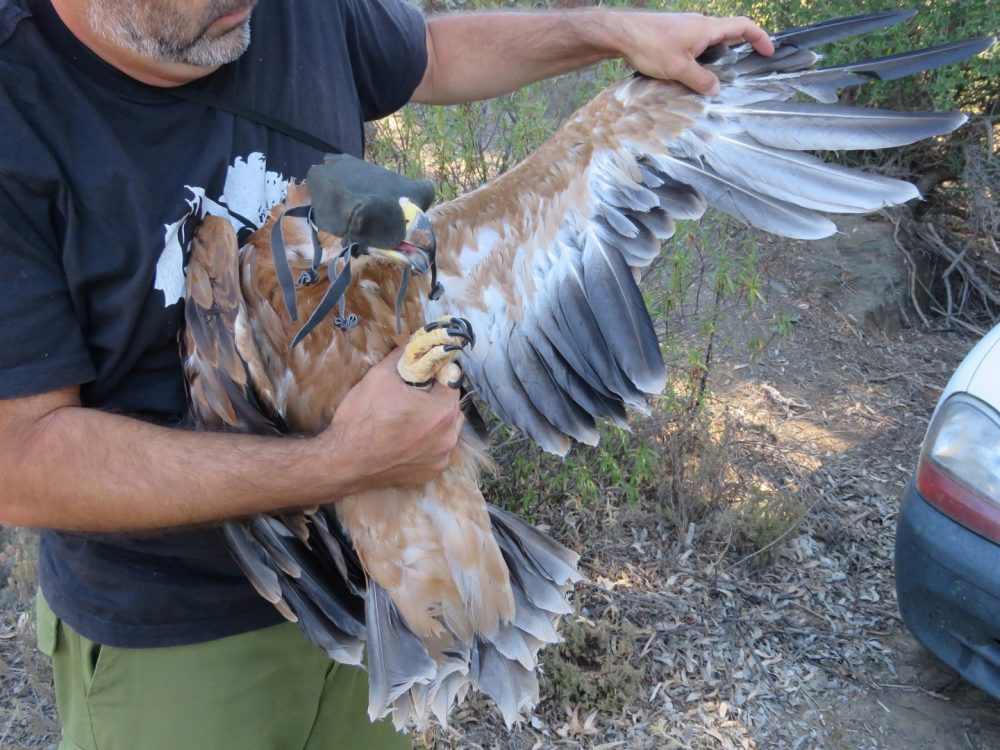A juvenile Iberian imperial eagle is today, November 15, returned to nature, in the Special Protection Area of the Vale do Guadiana, close to his birthplace, in Mértola, after having recovered his feathers and trained to hunt .
This return to nature will be closely monitored by a team of technicians from the League for the Protection of Nature (LPN) and the Institute for Nature Conservation and Forests (ICNF), who will follow the youth's flights to ensure the success of this operation. .
“For this purpose, use will also be made of remote tracking technology, which includes GSM transmitters and VHF transmitters, which will complement direct observation tracking”, informs LPN.
This calf was detected in July this year, when it was about 70 days old, during monitoring of Iberian imperial eagle nests. first flights to be able to leave the nest.
The assessment carried out at the site identified the need for a quick intervention that forced the removal of the brood from the nest and its transport to the Lisbon Wild Animal Recovery Center (LxCRAS, managed by the Municipality of Lisbon), where a team was located. veterinarian prepared to make the diagnosis and start your treatment. This young eagle is now six months old.
This juvenile is one of only 18 offspring of this species that were born in 2016 in Portugal (of which 13 flew successfully) and «will contribute to reinforcing the small Portuguese population of this very threatened species», says the LPN.
With this initiative, the conservation of the Iberian imperial eagle in Portugal receives another "important positive contribution".
The action takes place under the LIFE Imperial Project, which involves a consortium of institutions committed to the conservation of the species.
The Iberian imperial eagle occurs only in the Iberian Peninsula and is one of the most threatened bird species in the world (there are only about 500 pairs), with the status of Critically Endangered in Portugal and Vulnerable worldwide.
In 2016, 15 pairs of this species nested in Portugal, in the Special Protection Zones of Tejo Internacional, Erges and Ponsul, Veiros, Mourão/Moura/Barrancos, Castro Verde, Vale do Guadiana and its surroundings.
 Now it only nests in the Iberian Peninsula. The species suffered a great decline that culminated in the disappearance of the breeding population in Portugal, between the late 1970s and early 1980s.
Now it only nests in the Iberian Peninsula. The species suffered a great decline that culminated in the disappearance of the breeding population in Portugal, between the late 1970s and early 1980s.
It was only in 2003 that a breeding pair was confirmed again and, since then, they have been slowly colonizing the national territory, presenting the conservation status of «Critically in Danger».
In 2016, the national population was 15 couples, divided into the regions of Beira Baixa, Alto Alentejo and Baixo Alentejo. To learn more click here.
This LIFE Imperial Project is coordinated by LPN and has seven national and Spanish associated beneficiaries, 75% of which is financed by EU funds from the LIFE Program of the European Union.
LIFE Imperial aims to ensure an increase in the population of the Imperial Eagle in Portugal, and, as a result, of the global Iberian population, by reducing the threats that affect the effective establishment of couples in Portugal, guiding its action in order to ensure that the species' natural return to Portugal can be consolidated in a sustainable and lasting way.



















Comments